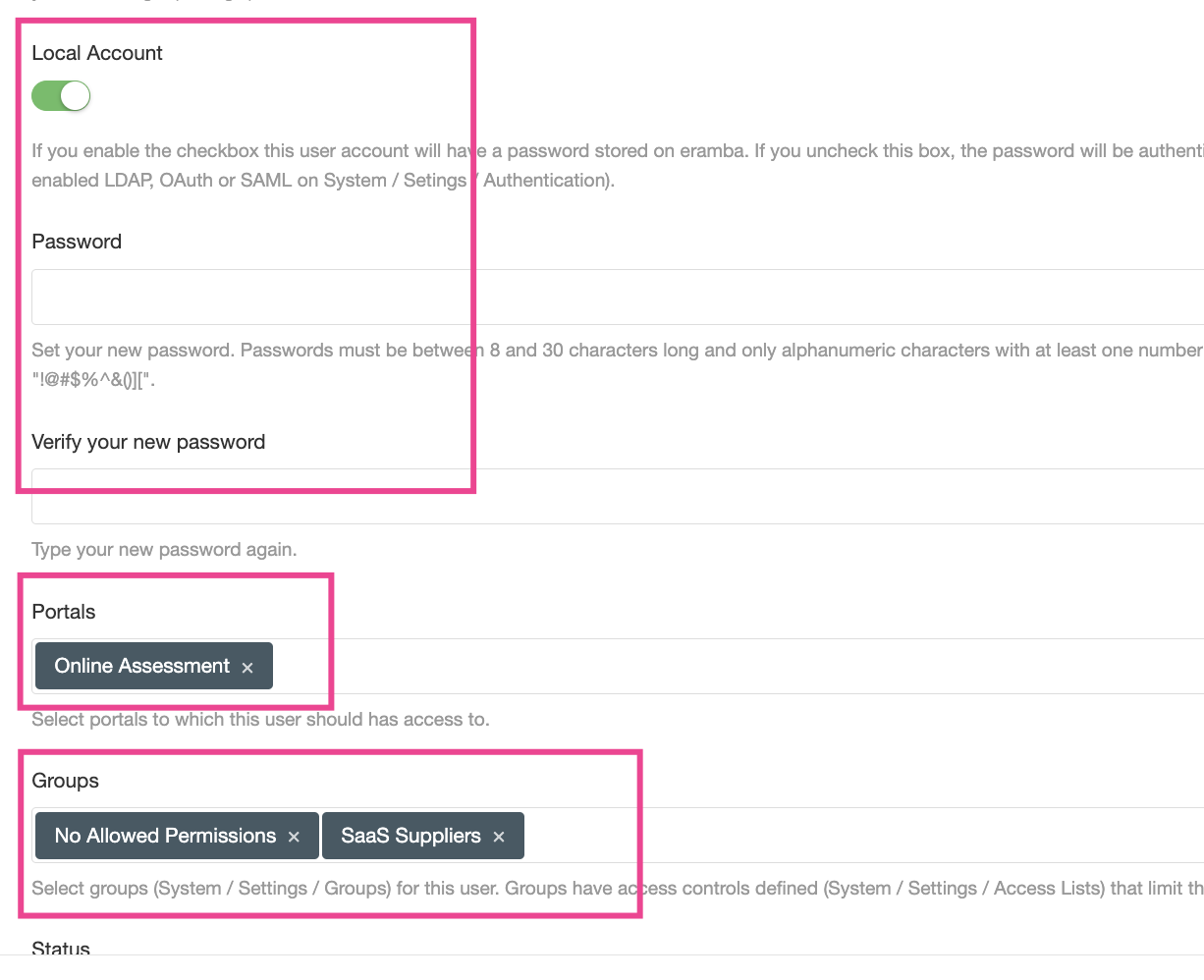Creating User Accounts
Creating user Accounts for OA auditees
Introduction
When using the OA module, you will need to create user accounts for the following reasons:
- Authenticated OAs: If your OAs require authentication, user accounts are necessary for participants to log in and access the assessment.
- Non-Authenticated OAs: Even if authentication is not required, user accounts must still be created for recipients to receive email notifications related to the OA. These accounts ensure that notifications can be sent, even if the login functionality is not utilized.
In this episode, we will discuss the types of accounts you need to create and provide recommendations for configuring their settings to ensure smooth operation of the OA module.
Groups
If you are working with multiple strategies, we recommend creating a group for each strategy under System / Settings / Groups. This helps keep your Online Assessment (OA) recipients organized and simplifies management.
For example, if your strategies include the following, you could create separate groups (with no permissions assigned) for each:
- SaaS Suppliers
- Consulting Suppliers
- Internal Risk Assessment
These groups ensure clarity and structure, making it easier to manage users and align them with the specific strategies they are involved in.
Account Settings
Ensure that account settings are configured to grant only the necessary access. If your Online Assessments (OAs) will be authenticated, focus on these three attributes:
- Local Account:
- Enable this option if the user will authenticate locally within Eramba.
- If not, the user will authenticate via the connector defined under System / Settings / Authentication / Main.
- Portal:
- Ensure that the only portal enabled is the “Online Assessment” portal. This restricts access to other parts of Eramba.
- Groups:
- Assign the user to a group with no permissions enabled, such as the default “No Allowed Permissions” group. This ensures they can only access the Online Assessment portal and not other modules. An additional group will be used to know to which strategy the user belongs to.
These settings maintain security by granting users access strictly to what is necessary for completing OAs.

If you are using non-authenticated OAs then settings are the same, the exception is that the "Local Account" option must be enabled and the password you set will never be used.
Playlist
- Episode 1Introduction to Online Assessments11 mins left
- Episode 2Typical OA Questions2 mins left
- Episode 3OA Related Modules2 mins left
- Episode 4OA Strategy8 mins left
- Episode 5Managing Questionnaires3 mins left
- Episode 6Configuring the OA Module2 mins left
- Episode 7Creating User Accounts2 mins left
- Episode 8OA Attributes3 mins left
- Episode 9Creating Online Assessments4 mins left
- Episode 10Reviewing Feedback3 mins left
- Episode 11Findings1 min left